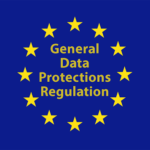| 31-5-2017 | François de Witte |
 On 18/5/2017, I attended a seminar covering the topic “From Fintech to Regtech… from potentially disruptive to leaner compliance opportunities” organized by The Finance Club of Brussels, the Free University of Brussels (ULB), the Solvay Finance Society and Thomson Reuters.
On 18/5/2017, I attended a seminar covering the topic “From Fintech to Regtech… from potentially disruptive to leaner compliance opportunities” organized by The Finance Club of Brussels, the Free University of Brussels (ULB), the Solvay Finance Society and Thomson Reuters.
Introduction
Fintech describes a wide range of innovation in financial technology, going from payment systems to lending and trading platforms.
Fintechs are seen in many cases as potential disruptors of the traditional intermediation of heavily regulated banks and other financial institutions See also my articles on PSD2 further down.
However Fintechs can also be enablers, helping banks and financial institutions to streamline their regulatory reporting and compliance, or help the disruptors in coping more easily with compliance in the future.
Setting the scene
Fintechs are playing an increasing role. The investments in Fintechs exceeded EUR 25 billion in 2016, and they bring a real digital revolution. Fintechs are perceived to foster the Digital Revolution, but equally to increase the digital divide in our society between the skilled and/or wealthy and those who are not.
Regulatory compliance is time-consuming and expensive for both financial institutions and regulators. The volume of information that parties must monitor and evaluate is enormous. The rules are often complex and difficult to understand and apply. There is a lot of data to be analyzed. Much of the process remains highly labor-intensive, or still depends heavily on manual inputs.
The Regtechs can be considered as an outgrowth of Fintec. Regtech use digital technologies— including big data analytics, cloud computing, robotics, behavioral analysis, blockchain technology and machine learning to facilitate regulatory compliance. Amongst other things, Regtech applications automate risk management and compliance processes, enable companies to stay aware of regulatory changes around the world, facilitate regulatory reporting and support strategic planning.
In recent years banks have seen opportunities to ask Fintechs to solve their large regulation and compliance issues. They can change the paradigm of banks from heavy IT releases to agile sprints, from integration to standardizing protocols, from static functions to workflows.
Hence financial institutions are more willing to consider using Fintechs for getting more efficiency. During the seminar, somebody of the panel mentioned: “Collaboration is the best innovation”. Banks can also help Fintechs thanks to their experience in managing large databases, managing risks and providing the required critical mass.
We have seen some applications recently in areas such as the KYC (Know Your Customer) domain.
Regtech – some other considerations
However, as mentioned during the seminar by Antonio Garcia Del Riego, Head of EU Corporate Affairs at Banco Santander, in Europe there remain obstacles in using Fintechs. The Bank Regulators in Europe expect the banks to deduct the goodwill from the core capital of the banks. This implies that software investments cannot be capitalized and need to be written off immediately in the P&L. A second challenge is the ability to attract digital talent, given the fact that the regulators limit the way in which the remuneration can be paid, whilst startups can be very creative here.
For the regulators, there also remain challenges. Once banks will have automated their reporting, the regulators will have to follow. They also will have to attract digital talent, to treat all these data in an automated way. If they do not succeed in this, they might challenge the use of Regtechs, and this is not what we want.
Regtechs can potentially offer similar benefits to regulators as they do to financial institutions. We recently observed that some (quite few) Regtech providers have emerged to serve the significant needs of regulators. There have seen recently some examples in Fintechs bringing behavioral models to the regulators, or new cognitive technology or the use of Blockchain technology (smart contracts), to trigger automatic alerts for the regulators when the banks exceed some thresholds.
Some regulators are taking initiatives to foster innovation. In 2016, the FCA (US) created its “regulatory sandbox,” a space where financial services companies are encouraged to test new products without regulatory consequences. Recently the Australian Securities and Investment Commission also created its regulatory sandbox, suggested to establish a new regtech liaison group, comprising industry, technology firms, academics, consultancies, regulators and consumer bodies, and announced that it would host a Regtech hackathon later in 2017.
Other countries have also taken steps to support Fintech and Regtech innovation. The Monetary Authority of Singapore is in the process of developing a regulatory sandbox. We might expect other regulators to also take similar initiatives.
Conclusion
Thanks to their digital technology, Regtechs enable banks and other financial institutions to reduce the burden of compliance. However some steps need to be taken to create a level playing field and some topics will have to be clarified.
One can ask oneself the question how far these innovations can become game changers, awakenings for the banks, or even force them to more transparency and predictability towards regulators.
 François de Witte – Founder & Senior Consultant at FDW Consult
François de Witte – Founder & Senior Consultant at FDW Consult
[button url=”https://www.treasuryxl.com/community/experts/francois-de-witte/” text=”View expert profile” size=”small” type=”primary” icon=”” external=”1″]
[separator type=”” size=”” icon=””]
More articles on this subject:
PSD 2: A lot of opportunities but also big challenges (Part I)
PSD 2 : The implementation of PSD 2: A lot of opportunities but also big challenges (Part II)
[separator type=”” size=”” icon=””]


 We live in the world of Big Data – we are told that there is so much potential that can be unleashed by embracing Big Data. This can lead to business efficiency, increased revenue, reduced expenditure, earlier identification of fraud etc. But for all this to reach fruition, we need to rely on the most basic building block – Static Data. Many companies have grand ideas of how to maximise revenue with data streams, yet fail to grasp the essential need for good, sound, structured Static Data.
We live in the world of Big Data – we are told that there is so much potential that can be unleashed by embracing Big Data. This can lead to business efficiency, increased revenue, reduced expenditure, earlier identification of fraud etc. But for all this to reach fruition, we need to rely on the most basic building block – Static Data. Many companies have grand ideas of how to maximise revenue with data streams, yet fail to grasp the essential need for good, sound, structured Static Data. On Tuesday 13th March 2018, RTL Z – a television channel – broadcast a “Cryptoshow” to explain how the Blockchain works and what it could mean for the future. They attempted to make the technology and information as simple as possible to show what uses the Blockchain could have in the world for consumers and businesses. One of the main areas of interest relates to Smart contracts. What are they? What are the advantages and disadvantages? What changes can they bring?
On Tuesday 13th March 2018, RTL Z – a television channel – broadcast a “Cryptoshow” to explain how the Blockchain works and what it could mean for the future. They attempted to make the technology and information as simple as possible to show what uses the Blockchain could have in the world for consumers and businesses. One of the main areas of interest relates to Smart contracts. What are they? What are the advantages and disadvantages? What changes can they bring? Corporate governance is the rules and processes by which a company is controlled and directed. It is a balancing mechanism between different stakeholders – directors, shareholders, management, government, external financiers etc. The treasury function performs highly skilled and complex tasks to ensure continued and harmonious execution of all cash related functions. At the same time, there is much interaction with both internal and external stakeholders. The corporate governance within the treasury function should always be performed in accordance with predetermined and approved metrics as laid out in Treasury statutes. This means undertaking operations that are consistent with the governance within the corporation.
Corporate governance is the rules and processes by which a company is controlled and directed. It is a balancing mechanism between different stakeholders – directors, shareholders, management, government, external financiers etc. The treasury function performs highly skilled and complex tasks to ensure continued and harmonious execution of all cash related functions. At the same time, there is much interaction with both internal and external stakeholders. The corporate governance within the treasury function should always be performed in accordance with predetermined and approved metrics as laid out in Treasury statutes. This means undertaking operations that are consistent with the governance within the corporation.

 We welcome a new expert – Paul Stheeman, who immediately brings us an interesting topic that has not been covered in much detail up to now. It goes to show that there are many facets in the role of treasurer and we can constantly find new subjects that have not been approached. Thank you, Paul.
We welcome a new expert – Paul Stheeman, who immediately brings us an interesting topic that has not been covered in much detail up to now. It goes to show that there are many facets in the role of treasurer and we can constantly find new subjects that have not been approached. Thank you, Paul. 
 As if the finance industry is not already facing enough challenges swimming though the sea of regulatory acronyms – BASEL iii, EMIR, MIFID ii, SOX, KYC etc. – a new directive is due to come into force on the 25th May 2018, namely GDPR.
As if the finance industry is not already facing enough challenges swimming though the sea of regulatory acronyms – BASEL iii, EMIR, MIFID ii, SOX, KYC etc. – a new directive is due to come into force on the 25th May 2018, namely GDPR. On 18/5/2017, I attended a seminar covering the topic “From Fintech to Regtech… from potentially disruptive to leaner compliance opportunities” organized by The Finance Club of Brussels, the Free University of Brussels (ULB), the Solvay Finance Society and Thomson Reuters.
On 18/5/2017, I attended a seminar covering the topic “From Fintech to Regtech… from potentially disruptive to leaner compliance opportunities” organized by The Finance Club of Brussels, the Free University of Brussels (ULB), the Solvay Finance Society and Thomson Reuters. François de Witte – Founder & Senior Consultant at
François de Witte – Founder & Senior Consultant at 
